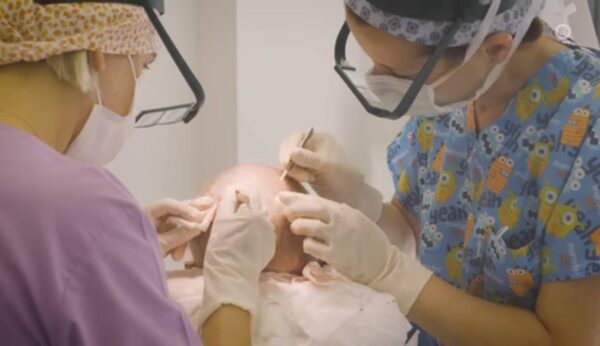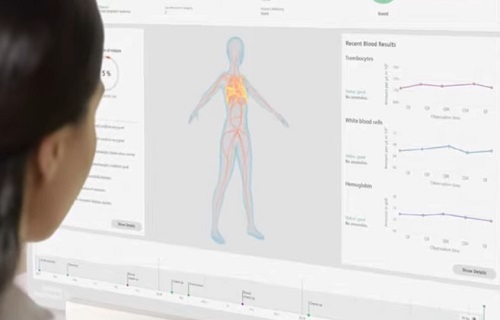What are the First Signs of Oesophagus Cancer?
First signs of oesophageal cancer can be subtle and may resemble less serious conditions. But recognizing these early symptoms is crucial for timely diagnosis and treatment. Common early signs:
1. Difficulty Swallowing (Dysphagia)
- A sensation of food getting stuck in the throat or chest.
- Progresses from difficulty swallowing solid foods to liquids over time.
2. Unexplained Weight Loss
- Rapid or significant weight loss without changes in diet or activity.
3. Chest Pain or Discomfort
- Pain, pressure or burning in the chest, especially when swallowing.
4. Persistent Heartburn or Acid Reflux
- Worsening or prolonged symptoms of gastroesophageal reflux disease (GERD).
5. Hoarseness or Voice Changes
- Persistent changes in the voice, often accompanied by throat irritation.
6. Chronic Cough
- A persistent, unexplained cough that doesn’t improve over time.
7. Regurgitation
- Food or liquids coming back up into the mouth after swallowing.
8. Fatigue or Weakness
- General lack of energy, often due to malnutrition or anemia.


What are the Causes of Esophageal Cancer?
While the exact cause is not always clear, several factors are known to increase the likelihood of developing esophageal cancer. These are:
1. Tobacco Use
- Smoking and chewing tobacco significantly increase the risk of both squamous cell carcinoma and adenocarcinoma, the two main types of esophageal cancer.
2. Heavy Alcohol Consumption
- Regular and excessive alcohol consumption is linked to an increased risk of esophageal cancer, particularly squamous cell carcinoma.
3. Gastroesophageal Reflux Disease (GERD)
- Chronic acid reflux or GERD can lead to Barrett’s esophagus, a condition where the lining of the esophagus changes, increasing the risk of adenocarcinoma (a form of esophageal cancer).
4. Obesity
- Being overweight or obese is a significant risk factor for esophageal adenocarcinoma, especially because it increases the likelihood of GERD and Barrett’s esophagus.
5. Age
- Esophageal cancer is more common in people over the age of 50, with the risk increasing as a person gets older.
6. Gender
- Men are more likely to develop esophageal cancer than women, with men being about 3 to 4 times more likely to be diagnosed.
7. Dietary Factors
- A poor diet, particularly one that is low in fruits and vegetables and high in processed meats or salty foods, can increase the risk of esophageal cancer.
- Eating foods that are very hot or consuming certain chemicals, such as nitrosamines (found in some preserved or smoked meats) may also contribute to the risk.
8. Barrett’s Esophagus
- People with Barrett’s esophagus, a complication of GERD, have an increased risk of developing esophageal adenocarcinoma due to changes in the cells lining the lower esophagus.
9. Human Papillomavirus (HPV)
- Certain strains of HPV, particularly HPV-16, have been associated with an increased risk of esophageal squamous cell carcinoma.
10. Chronic Esophageal Injury
- Conditions that cause long-term irritation of the esophagus, such as swallowing lye or other corrosive substances, can increase the risk of esophageal cancer.
11. Family History and Genetics
- A family history of esophageal cancer or certain inherited genetic mutations may increase the risk, although genetic causes are less common than environmental factors.
12. Exposure to Workplace Chemicals
- Long-term exposure to chemicals such as asbestos, certain dyes, or solvents may increase the risk of developing esophageal cancer.
What is Life Expectancy And Survival Rates With Esophageal Cancer?
Survival Rates for Esophageal Cancer
Survival rates are often presented as 5-year relative survival rates, which represent the percentage of people who are still alive five years after their cancer diagnosis, compared to people of the same age without cancer.
According to the American Cancer Society, survival rates for esophageal cancer vary based on the stage at diagnosis:
- Localized (Stage 1)
- If the cancer is confined to the esophagus and has not spread to nearby lymph nodes or other organs, the 5-year survival rate is 47%.
- Regional (Stage 2)
- If the cancer has spread to nearby lymph nodes or tissues, the 5-year survival rate is 25%.
- Distant (Stage 3 and 4)
- If the cancer has spread to distant parts of the body (metastasized), the 5-year survival rate drops significantly to about 5%.
Factors That Affect Life Expectancy and Survival
- Stage at Diagnosis: Early-stage esophageal cancer (when it’s localized) has a much higher survival rate compared to later-stage cancer. Early detection and treatment are crucial for improving outcomes.
- Type of Esophageal Cancer: There are two main types of esophageal cancer: adenocarcinoma (more common in the lower esophagus) and squamous cell carcinoma (more common in the upper and middle esophagus). Adenocarcinoma generally has a slightly better prognosis when detected early.
- Treatment Response: If the cancer responds well to treatments like surgery, radiation, chemotherapy or immunotherapy, the outlook improves. Advanced treatments and clinical trials are offering more hope for people with esophageal cancer.
- Overall Health and Age: Younger, healthier individuals may have better outcomes, as they are often better able to tolerate aggressive treatments like surgery or chemotherapy.
- Presence of Other Health Conditions: Conditions like heart disease, diabetes or other cancers can impact treatment options and overall survival.
Life Expectancy Based on Stage
- Early Stage (Stage 1): If detected early and treated effectively, people can have a good prognosis, with a life expectancy similar to that of the general population.
- Intermediate Stage (Stage 2): The prognosis is more guarded. Treatment options like surgery or combined therapies (chemotherapy and radiation) may extend life however the survival rate decreases significantly compared to Stage 1.
- Advanced Stages (Stage 3 and 4): These stages are often associated with a poor prognosis. But palliative care can help improve quality of life and prolong survival in some cases.
Improvements in Survival Rates
Survival rates have improved over the years due to advances in early detection, surgical techniques, chemotherapy and targeted therapies. Clinical trials and new treatment options continue to offer hope, particularly for patients with advanced-stage cancer.
Summary
- 5-year survival rate: Overall, around 20% of people diagnosed with esophageal cancer survive for 5 years or more.
- Stage 1: Around 47% of people survive for 5 years or more.
- Stage 2: Around 25% survive for 5 years.
- Stage 3 & 4: The survival rate drops significantly to around 5%.



What is the Treatment Options For Esophageal Cancer?
Main treatment approaches include surgery, chemotherapy, radiation therapy and targeted therapies. These can be used alone or in combination, depending on the specific circumstances.
1. Surgery
Surgery is the primary treatment for early-stage esophageal cancer. The goal is to remove the tumor and some of the surrounding tissue. There are different types of surgery:
- Esophagectomy: This is the removal of part or all of the esophagus. In some cases, the stomach may also be partially or entirely removed. The remaining esophagus is then reconstructed by connecting the stomach or another part of the gastrointestinal tract to the remaining esophagus.
- Minimally Invasive Surgery: For some patients, surgery can be done using a laparoscope (a thin tube with a camera) and small incisions, which can result in faster recovery times and less pain.
2. Chemotherapy
Chemotherapy uses drugs to kill cancer cells or stop them from growing. It can be used:
- As the primary treatment: For advanced-stage cancer, chemotherapy may be the main treatment to shrink the tumor and make it easier to treat with other methods.
- Neoadjuvant chemotherapy: This is chemotherapy given before surgery to shrink tumors and make them easier to remove.
- Adjuvant chemotherapy: This is chemotherapy given after surgery to kill any remaining cancer cells and reduce the risk of recurrence.
Chemotherapy can also be combined with other treatments like radiation therapy.
3. Radiation Therapy
Radiation therapy uses high-energy rays to kill or damage cancer cells. It can be used:
- As the primary treatment: For patients who cannot undergo surgery, radiation therapy may be used alone or with chemotherapy (called chemoradiation).
- Before surgery: To shrink a tumor, making surgery easier and more effective.
- After surgery: To target any remaining cancer cells that could lead to recurrence.
- Palliative care: In advanced stages, radiation may help relieve symptoms, such as pain or difficulty swallowing.
4. Targeted Therapy
Targeted therapy involves drugs or other substances that specifically target cancer cells, often with fewer side effects than traditional chemotherapy. Some targeted therapies work by blocking the signals that help cancer cells grow, while others may help the immune system identify and attack cancer cells. Targeted therapies are more commonly used for advanced esophageal cancer or as part of a clinical trial.
5. Immunotherapy
Immunotherapy helps the body’s immune system recognize and attack cancer cells. It is a newer approach and is being explored for esophageal cancer, especially in cases where the cancer has spread or is advanced. Drugs like PD-1 inhibitors (e.g., pembrolizumab or nivolumab) may be used in combination with chemotherapy for certain types of esophageal cancer, particularly adenocarcinoma.
6. Endoscopic Therapy
For early-stage esophageal cancer, or in patients who are not candidates for surgery, endoscopic treatments may be an option. These techniques include:
- Endoscopic Mucosal Resection (EMR): A technique where the tumor is removed using an endoscope (a flexible tube with a camera). It’s typically used for small, early-stage tumors.
- Photodynamic Therapy (PDT): This involves using a light-sensitive drug and light to destroy cancer cells. It is typically used for patients with superficial tumors or those who cannot undergo surgery.
7. Palliative Treatment
For advanced-stage esophageal cancer, where a cure is not possible, the focus shifts to relieving symptoms and improving quality of life. Palliative treatments may include:
- Stent placement: To open up blocked areas in the esophagus and help patients swallow food and liquids.
- Laser therapy: To help remove obstructions or reduce symptoms like difficulty swallowing.
- Palliative radiation therapy: To reduce pain or obstruction in the esophagus.
8. Clinical Trials
Patients with esophageal cancer may be eligible for clinical trials, which are research studies designed to test new treatments or combinations of treatments. Clinical trials may offer access to the latest therapies that are not yet widely available.
Factors That Influence Treatment Decisions:
- Stage of the Cancer: Early-stage cancer is more likely to be treated with surgery alone, while more advanced stages often require a combination of chemotherapy, radiation and other therapies.
- Health and Age: The patient’s overall health and age are considered, as more aggressive treatments like surgery may not be suitable for older patients or those with other medical conditions.
- Cancer Location and Type: The location of the tumor in the esophagus (upper, middle or lower) and whether it’s squamous cell carcinoma or adenocarcinoma can influence the treatment approach.
We wish healthy and happy life to you…

